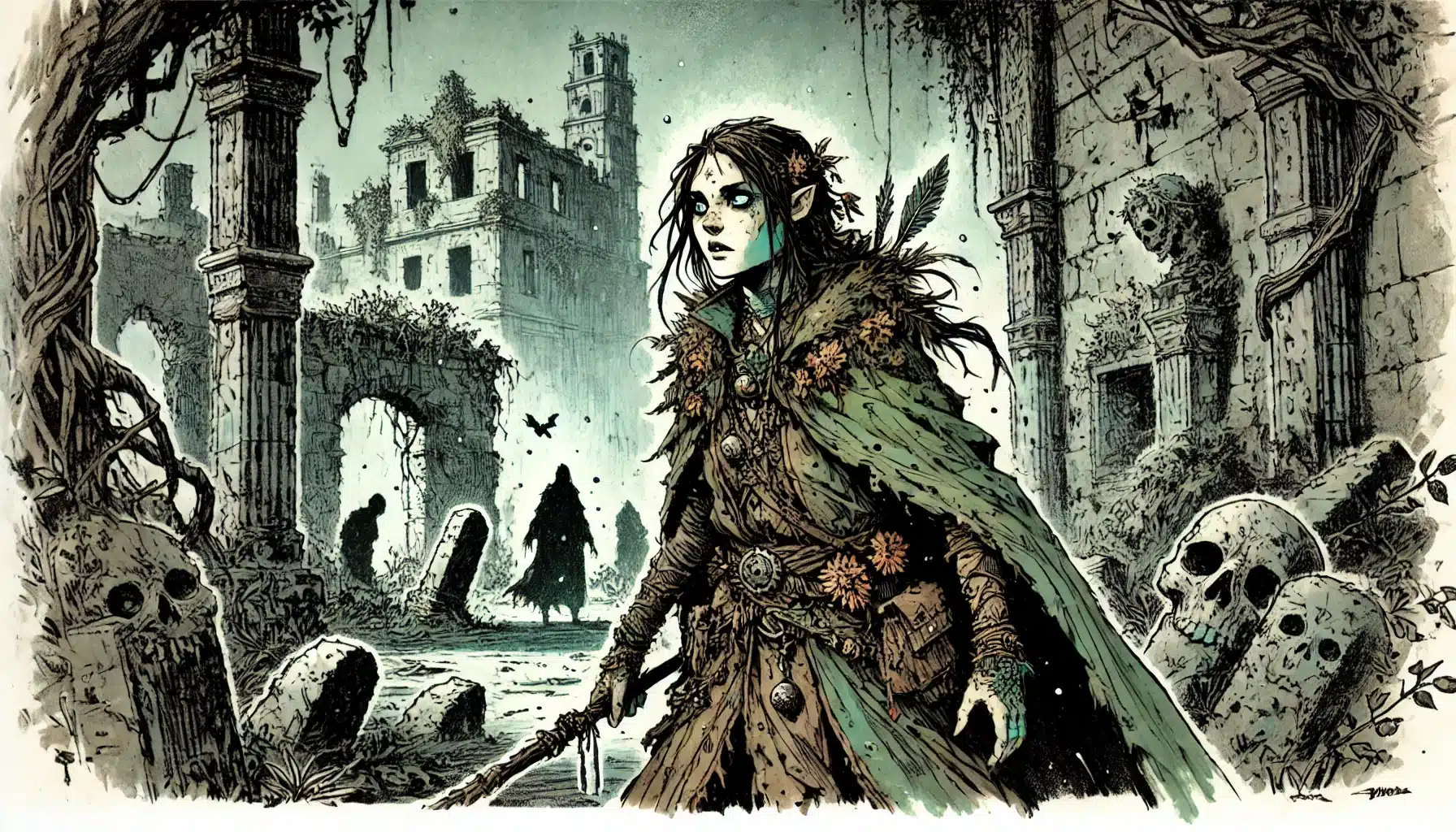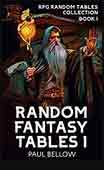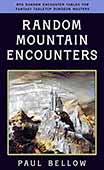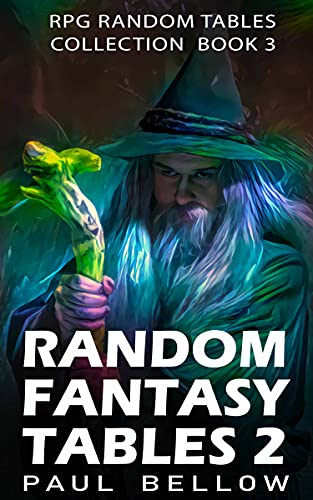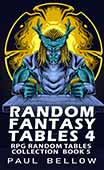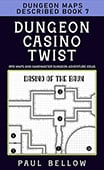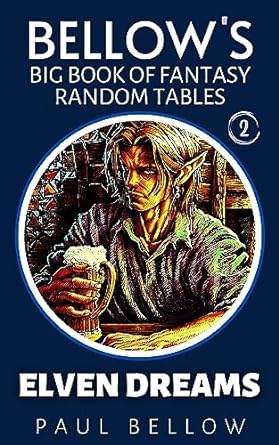There’s an unmistakable chill that clings to the world of The Walking Dead: shambling corpses, ever-hungry, relentless, and—perhaps most terrifyingly—fueled by the infectious weight of despair they drag behind them. Translating the visceral horror of this iconic undead apocalypse into Dungeons & Dragons means redefining more than stat blocks. It’s about recrafting what it means to survive, to mourn, and to make impossible choices when there’s nowhere safe left to hide. Gone are the days of necromancers gleefully animating throngs of mindless zombies at their beck and call; here, death itself is a tragic, gnawing threat, rising from the bones of everything the players hold dear.
Unlike standard D&D zombies, Walking Dead-inspired undead embody a psychological horror that gnaws at the soul. They’re not brought forth by dark magic or driven by some grand villain’s scheme. There is an eerie randomness and cruelty to their existence—no grand design, only decay. The dead walk because the world is broken, not because an evil lich willed it so. Instead of skeletons in armor or moaning ghouls vying for brains, these zombies stagger endlessly in search of the living, the simple scratch of their nails a potential death sentence. One bite is enough to unravel a hero’s fate, and any victory is pyrrhic at best.
What sets these undead apart is a cluster of connected horrors: their contagious bite, their swarming pack instinct, the slow runoff of supplies, and—most of all—the weight of loss. It is not the thrill of victory that keeps survivors moving but the ever-present specter of ethical quandaries. Who do you trust with the last of your medicine? When a friend is bitten, who will draw the blade first? Players are forced to confront the raw calculus of survival and the shuddering anxiety that their next choice might be their last. (A good D&D backstory generator can help out a lot here…)
Prepare for campaigns pitched on the knife’s edge of survival, where every resource is a prize and even small cities become graveyards. The Walking Dead approach prioritizes raw tension and uncertainty over the flamboyant heroism of traditional high fantasy. Healing is precious, rest fleeting. Magic—if it exists at all—feels less like a solution and more like the vestige of a world already lost.
This homebrew isn’t about raising epic armies of the dead to fight back against dragons and liches. It’s about enduring in the shadow of extinction, one hard-earned day at a time. It’s about hope flickering like a candle in the night, threatened by every hush and groan beyond the barricades.
If your table craves stories of heartbreak, panic, and unexpected courage, these rules are your blueprint. Abandon the trope of the faceless undead horde. Embrace the tragedy of every corpse. Let the threat of infection and the pressure of famine be the true monsters lurking in the dark, and watch as your players become more than adventurers—they become survivors, haunted by the consequences of every breath.
Try my AI Tabletop RPG generators...and an extensive library of content!
Core Traits of Walking Dead-Style Undead
What makes a Walking Dead zombie so chillingly different from the classic D&D undead? It’s not just the shambling gait or the hunger for warm flesh—it’s the depth of fear they inspire through their behaviors, their dangers, and their story implications. Each trait of this variant is designed to push players to think, adapt, and panic.
First, consider their movement: Walking Dead zombies are painfully slow, sometimes each footfall sounding like doom itself. Yet their momentum feels endless, their stamina inexhaustible. Unlike swift or cunning abominations, they’re walking inevitability. Their slow pace allows for tactical outmaneuvering, but a single mistake can funnel the horde straight into a narrow corridor, spelling disaster for unprepared adventurers.
Second, infection is everything. Traditional D&D zombies don’t threaten to end a hero’s career with a single, unlucky bite. In this setting, even a minor wound can spell weeks of tension or the start of a doomed race against time. Imagine the horror: a scratch for a barbarian might be a mortal threat, not just a hit point loss. Suddenly, every battle has consequences that bleed into the overarching story.
Third, these undead are headshot-vulnerable. Forget hacking at limbs or torso—only destroying the brain will end these walkers for good. This presents a dreadful twist in combat, especially for lower-level parties with limited ranged options or for those unaccustomed to such surgical precision.
⚔️ Fantasy RPG Random Tables Books
Make life as a Gamemaster easier…
If you play Dungeons & Dragons, Pathfinder, or other fantasy RPGs, this
RPG random tables series
is packed with encounters, NPCs, treasure, and more. Available in eBook or print—either way, you’ll have a wealth of adventure ideas at your fingertips.
Fourth, they hunt by sound and scent. Sudden noises—a clattering sword, a heated argument, the distinctive twang of a snapped crossbow cord—can draw the dead like starving wolves, compounding the danger exponentially. Noise discipline and clever distractions become the difference between life and death.
Lastly, Walking Dead undead are never truly frightening alone; their terror multiplies with numbers. One zombie can easily be skirted. Ten are a tactical puzzle. A hundred? That’s an apocalypse. Parties must fundamentally rethink their approach to navigation, confrontation, and retreat. Open combat is rarely the answer; stealth, diversion, and quick thinking are the new spells in your arsenal.
| Variant Name | Special Trait | Danger Level | Player Combat Strategy |
|---|---|---|---|
| Crawler | Legless, drags self | Low | Avoid ground-based grabs, stay mobile |
| Bloater | Swollen, bursts | Medium | Attack at range, avoid melee |
| Howler | Emits loud screech | Medium | Silence quickly, avoid alerting others |
| Swarm Host | Holds parasite horde | High | Fire/area attacks, avoid close quarters |
| Shambler | Standard undead | Medium | Headshots, avoid being swarmed |
| Rotter | Putrid, toxic flesh | Medium | Don’t attack in melee, poison risk |
| Fresh Runner | Recently turned | High | High initiative, prioritise quickly |
| Shadow Lurker | Hides in darkness | Medium | Use light, watch for ambushes |
| Entangler | Snaring limbs | Medium | Maintain distance, cut free allies |
| Hive-Linked | Shares senses | High | Stealth, avoid alerting entire area |
Dungeon Masters are challenged, then, to present undead not as mere speedbumps to XP, but as the ambient, gnawing dread that shapes every player action. Treat the walkers as a living (or unliving) ecosystem, not as piles of loot in tattered flesh. Let the threat persist and permeate—ambushes in the night, groans echoing from the next alley, the ever-present need to reconsider, “Should we light a fire tonight?”
When done well, this approach changes how players behave. Negotiation, avoidance, improvisation, and moral compromise become valuable survival skills—often, more vital than swordplay or spellcraft. Don’t just put the undead on the map. Let them sink their cold fingers into every decision your players make.
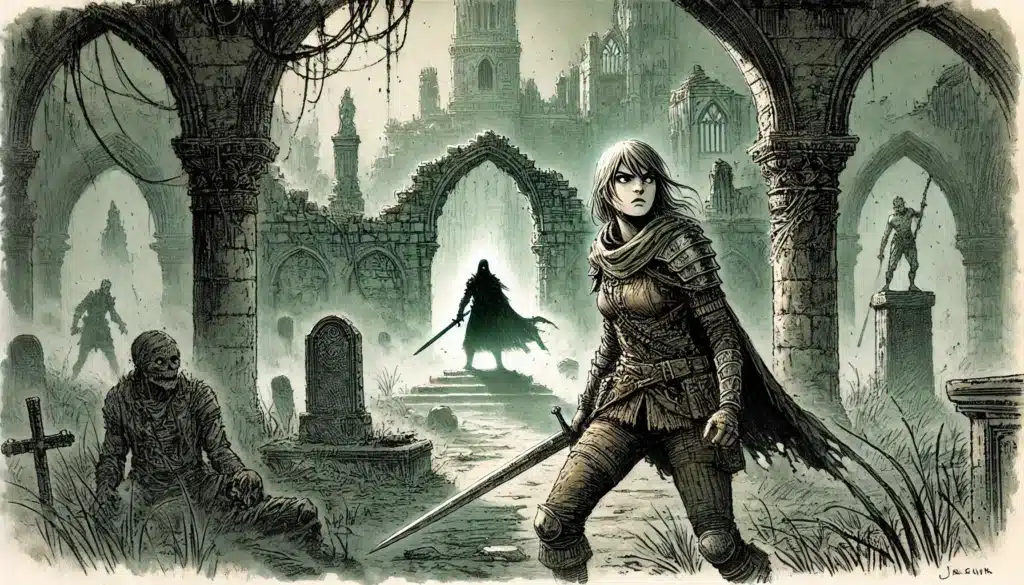
Infection and Survival Mechanics
One bite. That’s all it takes to send shivers through the party. The infection system here is the pulsing, rotten heart of Walking Dead undead. Any attack with teeth or nails threatens to begin the slow, horrific spiral from life to death—and undeath thereafter.
When a character is bitten or deeply scratched, they make a Constitution saving throw with a DC determined by the undead’s strength (typically DC 13–17). Failure starts a grim countdown. Stages of infection run from unnoticeable (Stage 1: feverish, disoriented) to full collapse and reanimation (Stage 5: death’s threshold). There’s no “undo” button—just desperate attempts at improvised medicine, limb amputation, or burning the wound before it’s too late.
Survival is measured in choices, not just hit points. Desperate party members may opt to sever a bitten limb (requiring a painful Medicine or Survival check), risking bleed-out or permanent disability in exchange for a fighting chance. Alchemy kits, cleric prayers, or even arcane remedies might slow the spread, but nothing is guaranteed. The dread lingers—will today be your last? Is that cough just the cold, or something far worse?
Every symptom draws out the story. Players roleplay their decline: chills, hallucinations, mounting terror at infecting their friends. DMs are encouraged to dangle hope (rare cures, legendary grit) as well as leverage heartbreak—sometimes a “heroic death” is the noblest end, buying the others time to escape. The infection is not just a punishment; it is the crucible in which true character is forged.
Infection Rules and Effects:
- Constitution saving throw vs. DC 15 when bitten or scratched (on failure, infection begins)
- Stage 1: 1d4 hours—fever and fatigue; disadvantage on ability checks
- Stage 2: 1d6 hours—delirium, chills, require DC 10 Wisdom save to act as normal under stress
- Stage 3: 1d8 hours—exhaustion level 1, visible wounds darken, minor hallucinations
- Stage 4: 1d10 hours—exhaustion increases to 2, movement speed halved, panic attacks
- Stage 5: Death and reanimation within 1d12 minutes unless treated
- Amputation: DC 17 Medicine check (or DC 14 if using a sharp, heated blade); success prevents progression but causes 2d6 damage and possible bleeding
- Improvised medicine grants advantage on the next stage’s save but may introduce infection from other sources
- Cleric magic: Lesser Restoration delays the next stage by 1 hour; Greater Restoration cures infection only if cast before stage 4
- Roleplay symptoms: uncontrollable shivers, irrational anger, forgetting names, moments of lucidity
- Heroic death: infected character can choose to go out in a blaze of glory, granting party advantage on escape rolls
- Failed save at any stage accelerates to next stage in half normal time
- Group despair: when a party member is infected, all allies make a DC 12 Wisdom save or suffer -1 morale until resolved
Leaning into long-term consequences, DMs should twist infection from a mere obstacle into a driving story engine. Let players have hard choices: mercy-kill, risk amputation, hide the truth, or hunt for a miracle. The bite isn’t just a wound—it’s a secret, a shame, a time bomb sweating under every bandage.
The real payoff of this mechanic is emotional. When symptoms escalate or hope fades, players will remember the moments they carried their fallen through the rain, or the night someone confessed that their time had come. Use infection not to punish recklessness, but to define the price of survival—and the glory of defiance.
Optional: Permanent Infection Rules
What if infection is the world’s shadow, not a predator? Imagine a setting where every living thing already carries the seed of undeath, dormant and patient. Upon death—any death, violent or natural—transformation is inevitable unless the body is destroyed or sanctified. The gnawing fear that any fallen comrade could rise again, no bite required, changes everything.
⚔️ Fantasy RPG Random Tables Books
Make life as a Gamemaster easier…
If you play Dungeons & Dragons, Pathfinder, or other fantasy RPGs, this
RPG random tables series
is packed with encounters, NPCs, treasure, and more. Available in eBook or print—either way, you’ll have a wealth of adventure ideas at your fingertips.
Suddenly, the stakes are enormous. Every battlefield demands swift, possibly callous triage: burn the bodies, decapitate the dead, never linger too long among the fallen. Morale-boosting funerals turn into frantic, tearful rituals of prevention. The dread doesn’t only come from being attacked. It comes from the simple, horrifying possibility that last night’s tragedy will climb to its feet before dawn.
This rule fuels existential terror and forces grim resourcefulness. It shapes the campaign’s every action, making every death—friend, foe, or stranger—another thread in the tapestry of apocalypse.
Sound, Smell, and Swarm Behavior
The undead’s greatest weapon isn’t their teeth—it’s their uncanny ability to sense, follow, and multiply. In this homebrew, they are drawn not only to the sight of the living but to every clang of steel, every ragged breath, and every whiff of blood on the wind.
Sound is a siren’s call. A dropped shield, a shouting match, a crying infant—these invite catastrophe. DMs assign noise DCs (10–20) based on the volume, with higher rolls attracting more undead from farther away. Even the crackle of a campfire, too loud or too late, can herald a night of terror.
Scent matters, too. Blood, sweat, unfamiliar perfume, even the lingering tang of cooked meat can lure stray zombies in the darkness. Smart survivors learn to mask their scent with mud, ashes, or even the imagined horror of wearing rotting flesh. The more meticulous the party, the longer they live.
Swarm logic is what turns isolated undead into an existential threat. Sound or scent will snowball—one zombie finds you, groans, and in moments you’re staring down the beginning of a tide. The group must move like ghosts or risk being washed away in a sea of hands and teeth.
Stealth and environmental awareness are paramount. Camouflaging with corpse remains, staging distractions (bells, thrown rocks, bait animals), and planning silent routes become as important as packing your crossbow bolts. Every moment can be the one that tips the balance from stealthy survival to huddled, hopeless siege.
Sensory-Triggered Rules/Scenarios:
- Dropping a metal item within 100 feet triggers a DC 12 sound check; zombies within range roll Perception to investigate
- Firing a firearm (if applicable) instantly attracts all undead within 500 feet
- Using rotting flesh as camouflage gives advantage on Stealth, but requires a DC 13 Constitution save or suffer minor infection
- Rain or storms mask sound, lowering DCs for sneaking by 2
- Failed group Stealth means the nearest walker groans, drawing 1d4 more each minute
- Cooking hot meals increases scent radius to 200 feet for 1 hour
- Wounded party members (bleeding) raise likelihood of detection by +2 to Perception DCs
- Using animals as bait diverts half the horde toward the noise source (animal must make DC 15 Survival to escape)
- Zombie “herds” move toward the largest continuous noise every turn
- Breaking windows, slamming doors: DM discretion, but minimum noise DC 15
- Fireworks, smoke bombs, or magical sound illusions can reroute, scatter, or concentrate walker swarms
- Cold weather dampens scent, granting +2 to Stealth DCs
- Failed campfire concealment triggers nighttime encounter with 1d6 zombies
- Corpse camouflage only works for 10–20 minutes before breaking down
- A failed Perception check while sneaking can stumble into a “sleeper” zombie hidden in debris
DMs should use these rules to make the world itself feel hostile—every move, no matter how trivial, carries the weight of consequence. There are no true “safe” actions, only those that delay the inevitable. Even looting or tending wounds becomes a tense, collaborative effort.
Try my AI Tabletop RPG generators...and an extensive library of content!
The beauty of this system lies in its paranoia. Encourage players to dread even the most mundane rustle. Soon, every decision becomes a question: “Is it worth the risk?” Some nights, just making it to dawn is a victory worth celebrating.
Optional: Swarm Mechanics
Few images are as chilling as a tidal wave of the dead. To represent massive undead groups, treat the horde as a single “swarm” entity with shared HP, resistances, and attack patterns. Swarms move slower but are nearly impossible to scatter by normal means.
The swarm advances relentlessly, splitting only as obstacles force it to reroute. Players attacking the swarm damage the collective; area effects are most effective, but every attack feels like bailing out a sinking canoe with a teacup. The swarm can pin, engulf, or trample—anyone caught inside risks automatic damage and, worse, being torn down entirely.
Use abstracted initiative for the swarm, letting PCs act between “waves” of the horde. This system heightens the sense of futility and panic. The message to the party is clear: escape, not victory, is the only sane, long-term goal.
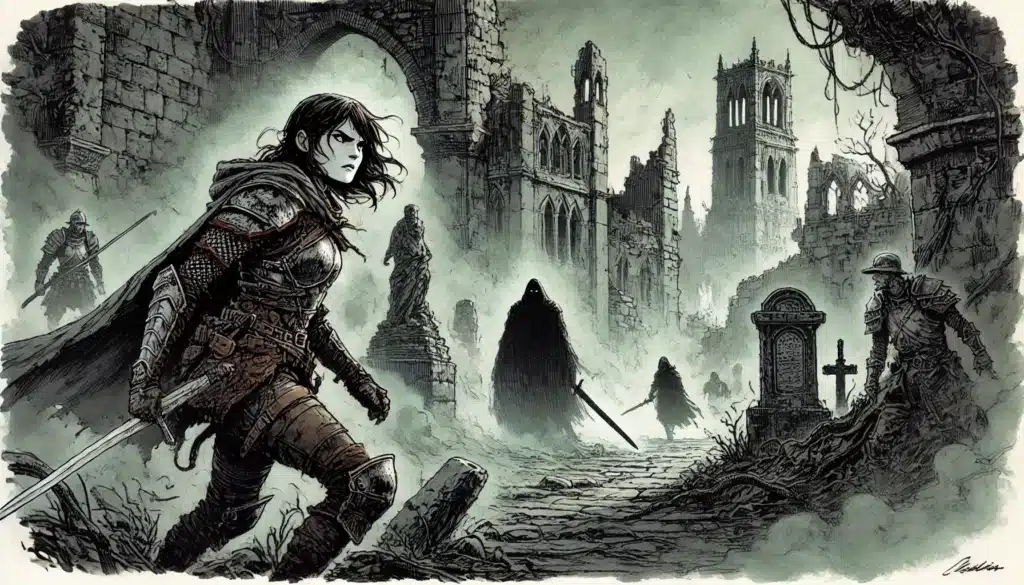
Creating Tension with Resource Scarcity
The world these undead have ravaged is not just dangerous—it’s inhospitable. Food is old, water fouled, medicine scattered and hoarded. The magic so common in heroic fantasy feels rare, or even forbidden, more rumor than reality.
Long rests are a luxury, not a guarantee. Healing magic is limited, often tied to ancient relics or reluctant NPCs. Gear must be salvaged or improvised—forget shopping for enchanted blades. Ammunition is precious; a single arrow fired is one fewer tomorrow. Even the specter of exhaustion weighs heavily, steadily grinding down the party.
Survival becomes an economy of hard choices. Will your cleric heal a minor wound, or save that last spell for something truly dire? Do you share your last ration, or hoard it, lying to your friends about your hunger? Crafting, scavenging, and trading for goods become the lifeblood of play. Characters devise slings from bedrolls, barricades from broken carts, medicine from weeds and rumor.
The tension never lifts. Safety is transitory. Hope is a rationed commodity, fortified with grim determination. The DM’s job is not to crush spirit, but to make every scrap, every drop of water, every soothing word, feel earned. Sometimes the only reward is another night survived.
Resource Scarcity Mechanics/Rules:
- Track daily rations for food and water; lack causes exhaustion after 24 hours
- Each character must make a daily Survival check to find or purify water; failure means contaminated supply, DC 13 Constitution save or risk illness
- Arrows and bullets are tracked individually; players must scavenge or craft to replenish
- Long rests take 48 hours and require a secure shelter to gain full benefit
- Potions, spell scrolls, and medical kits are counted as individual “uses,” not replenished with rest
- Using magical healing on an infected wound reduces spell maximum until a long rest is completed
- Crafting basic weapons or barricades requires time, raw materials, and DC 12–15 skill checks
- Missed meals cause 1 level of exhaustion per day until remedied
- Morale for NPC allies drops if food is scarce or hope falters; DC 10 Persuasion/Performance to rally each day
- Limited spell slots for casters; only half can be refreshed without access to ancient artifacts or rare sanctuaries
- Infection kits are rare; find or roll for availability in abandoned clinics (DC 15 Investigation)
- Rest interrupted by undead incursions grants only short rest benefits; cumulative disadvantage after third such night
- Loot tables are weighted to scraps, half-useful tools, or single doses of useful items, not gold
- Cold or wet weather increases Survival DCs for travel and foraging
- Horses, wagons, or mounts consume extra rations per day; unfit animals may become zombie bait
- Bargaining/black market: roll Charisma checks to negotiate for essential supplies
- Forage yields only 1d4 useful food units per day (per group), and water points of similar rarity
DMs must tread a tightrope: challenge the party, but don’t grind them to hopelessness. Let small victories shine—a discovered bag of oats, a rusty sword that holds just long enough.
Through scarcity, the party becomes a true family, relying on each other and building camaraderie. The emotional stakes soar; even a dry crust of bread can feel like a treasure, a song, a memory of what was.
Optional: Gritty Realism Rest Rules
Traditional D&D rests don’t fit the ethos of relentless, apocalyptic dread. Here, rest is both precious and perilous. A long rest stretches over two full days, requiring secure shelter, watch shifts, and a steady source of food and water. Without these, players gain only the benefits of a short rest—and even then, true recuperation remains elusive.
Healing feels harder. Magical recovery is only partial, capped at half maximum HP unless under the care of an experienced healer or found within a fortified enclave. Simple discomfort—damp beds, constant noise, shivering through the night—imposes disadvantage on all Recovery checks.
Safety is a resource, not a guarantee. Encourage players to seek out hidden havens, make alliances for rest, or brave the risk of exhaustion to push onward. Nothing is easy. Yet that’s what makes survival meaningful.
Worldbuilding with Walking Dead Undead
A world gripped by the Walking Dead variant is one of loss, decay, and the desperate flicker of what might be rebuilt. The collapse of kingdoms is not a matter of war or politics, but of slow attrition—populations withered by fear, leaders lost to infection, cities transformed into mausoleums echoing with the groans of the damned.
Survivor enclaves bloom in the ruins, tiny islands of civilization ringed with barricades and sharpened stakes. Every settlement is a culture unto itself—heroes may find friendship, suspicion, or cutthroat opportunism behind each gate. Divine magic wavers, its practitioners haunted by the question: Why has the Light failed us? Some clergy refuse to heal the infected, fearing moral corruption; others risk excommunication to lay hands on those marked by death.
⚔️ Fantasy RPG Random Tables Books
Make life as a Gamemaster easier…
If you play Dungeons & Dragons, Pathfinder, or other fantasy RPGs, this
RPG random tables series
is packed with encounters, NPCs, treasure, and more. Available in eBook or print—either way, you’ll have a wealth of adventure ideas at your fingertips.
The apocalypse is not solved with swords. Epic quests fade in favor of agonizing choices: Who do you bring inside the walls? What debts will you pay for sanctuary? Whom do you betray, whom do you save? The true monster is trust, and the fear of losing it.
Focus your campaign on these moral tides. Dangle temptations—power, escape, solace—and let the players weigh what matters. The world is not a puzzle to be solved, but a wound to be survived, perhaps healed. Heroism feels smaller, but sharper; every action carves a path through the darkness.
Factions and Survivor Settlements
These shattered lands are homes to the desperate, the ruthless, and the hopeful. Survivors cluster in groups, each with their beliefs, fears, and leadership. Trust is scarce. Politics matter as much as steel.
Some become isolationist cults, worshipping new gods of death or decay, their priests demanding ritual sacrifices to “appease the dead.” Others are roving bands of scavengers, trading anything for food or bullets—a knife in the dark is worth more than gold. There are zealous anti-magic crusaders, convinced that arcane power summoned the plague and must be destroyed at all costs, and sad-eyed nobles presiding over the ashes of their broken domains.
Each group’s view of the undead varies: objects of fear, instruments of power, or tokens of cosmic punishment. Sometimes, they see strangers as contaminated threats; sometimes, as hope’s last, fragile thread. Every encounter becomes a dance of negotiation, threat, or fleeting peace.
Factions and Settlements:
- The Ashen Faith: Ritualistic cult, elder council, high threat, worships the “cleansing fire”
- Ironbridge Hold: Fortified town, pragmatic mayor, medium threat, trades only for essentials
- The Quiet Brotherhood: Silent monks, hierarchal rule, low threat unless provoked, practice corpse embalming
- The Red Lanterns: Outlaw scavengers, charismatic leader, high threat, “might makes right” philosophy
- Vesper’s Sanctuary: Refuge for orphans/children, matronly leadership, low threat, fiercely protective
- The Black Banner: Ex-soldiers, militant chain of command, medium-high threat, anti-outside prejudice
- The Verdant Clan: Forest dwellers, druidic council, medium threat, view undead as an affront to nature
- Burned Star Company: Wandering traders, loose alliance, low threat but can turn exploitive if desperate
- Chapel of Saint’s Rest: Clerics and paladins, theocratic hierarchy, medium threat, divided on doctrine of healing
- The Scour: Arcane zealots, autocratic wizard, high threat, magic heavily restricted
- Bride’s Watch: Isolated noble family, matrilineal rule, low-medium threat, obsessed with blood purity
- Night Market: Underground barter-town, merchant syndicate, low threat (inside), high risk (outside)
- The Unbroken: Veterans, democratic council, medium threat, value community above all else
- Candlewick Hollow: Hermits and mystics, anarchic, low threat, shun all outsiders as “cursed”
Factions are not just color—they’re the lifelines, the betrayers, the temporary havens in a sea of hunger. Let alliances and rivalries ebb and flow. Survival may hinge on a single deal made behind a crumbling wall.
These groups drive the campaign’s emotional core. An enemy today might be a friend tomorrow, or vice versa. Let characters navigate fear and suspicion, find kinship in unlikely places, or make enemies for life with a single, desperate choice.
Optional: Faction Reputation System
To create a living world, track each party’s reputation with survivor factions. Each meaningful action—trading fairly, double-crossing, heroism, or petty theft—adjusts their standing.
High reputation unlocks new resources: safer rest, better intelligence, access to rare supplies or spellcasting. Low reputation can bar entry, risk betrayal, or spur ambushes. Reputation is fluid, shaped with each encounter, always open to chance redemption or irreversible downfall.
This system isn’t just book-keeping; it’s a second character sheet for the party. Make players care about every alliance—and fear every burned bridge.
Campaign Ideas and Story Hooks
The marrow of this system is character-driven play, stories that throb with heartbreak and doubt. Here are prompts tailored to Walking Dead undead, each designed to snare the party’s conscience, not just their sword arms.
Imagine a child rumored to be immune—protecting her becomes a mission shadowed by hope and horror. Perhaps the last alchemist with the secret of the pox is lost, and you must escort him through undead-choked barrens. A shattered family begs for help to reconnect, secrets and old wounds roiling beneath the surface.
Quests pulse with the struggle for meaning: is it better to steal from allies or starve? When infection is discovered, do you confess or conceal? Even the investigation of the outbreak’s cause—a journey to the world’s diseased heart—can become a plea for redemption, not just a puzzle to solve.
Walking Dead-Style Quest Hooks:
- Clear a temple overrun by undead to become a safe haven for refugees
- Escort a bitten NPC child to rumored healers, unsure of her fate
- Track a supply caravan lost in the wild, only to find it overwhelmed by “crawlers”
- Decide whether to mercy-kill an infected party member or risk hiding them from allies
- Hunt for a lost page of a tome said to cure the infection
- Steal rations from a fortified settlement without alerting the horde
- Negotiate access to water from a paranoid enclave, at the cost of betraying another group
- Follow a massive undead horde to discover the “herd’s” origin or target
- Protect an elderly cleric who refuses to leave her doomed congregation
- Reunite two lovers separated by a sea of undead (and suspicion of infection)
- Sabotage a rival’s barricades to draw walkers away from your own camp
- Survive a hostage exchange under constant zombie threat
- Convince a noble to open gates for desperately fleeing villagers
- Infiltrate an anti-magic cult to uncover a lost healing ritual
- Evacuate an entire town before the horde arrives—or stay and defend it
- Discover and investigate a “safe” zone that isn’t what it seems
Let these hooks shape tragedies and small triumphs alike. Prioritize the inner lives, secrets, and shifting loyalties among survivors. Reward creative thinking and empathy as much as strength.
At its best, this system is about breaking and building—testing bonds, mending trust, and discovering what it means to hope in a world that punishes hope. Lean into group dynamics and personal arcs, and make every choice sting or sing.
Optional: Moral Dilemma Scenarios
Specific, gut-wrenching moments are the real fuel for your campaign’s fire. Present scenarios such as a trusted NPC showing early infection but pleading for secrecy to “not endanger morale.” Force the party to choose between saving a stranger and preserving their limited supplies. What will they do when the only way to distract a deadly horde is to sacrifice a fellow survivor?
These moments should not be solvable by dice alone. Let them simmer, divide, and ultimately define who the party becomes. This is where legends, friendships—and sometimes betrayals—are forged.
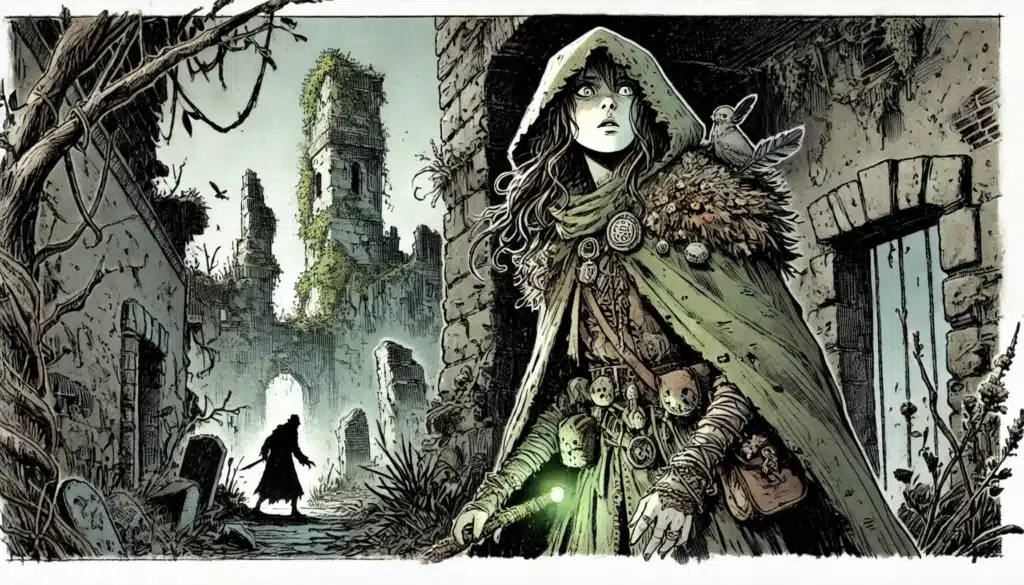
Final Thoughts on Using Walking Dead Undead in D&D
Adopting Walking Dead-style undead does not mean purging all fantasy from your world. Instead, it offers a grim, intimate subset of horror sure to haunt players long after the campaign ends. This is survival horror at its bleakest and bravest, a grounded rework that thrives on the slow decay of hope, not on spectacles of destruction.
The beauty of this approach is its resonance with the human condition. The threat is not cosmic; it is almost familiar: loss, scarcity, the unyielding march of time. By stripping away the comfort of resurrection magic or the promise of certain victory, you invite your players to grapple with questions that matter—what constitutes mercy, when is hope a curse, and how do you live when enduring is all that remains?
Pacing is everything. Don’t drown players in agony; instead, let dread build in waves, broken by moments of rest, rare laughter, or desperate joy. Make the world feel alive precisely because of what it stands to lose. Encourage your table to invest in the small details: the last shared meal, the mementos of better days, the faces that fill the silence as the undead close in.
Handled with care, this homebrew can make the undead more than just monsters—they become the echoes of every mistake, memory, and lost hope within your world. Every walker is a story waiting to be told, a regret embodied, a lesson in the cost of survival. The campaign becomes more than a game—it’s an exercise in empathy, resilience, and the kind of courage that refuses to die, no matter how many times the dead rise.
Invite your players to step into these shadows with you. Guide them through both terror and tenderness. If you get it right, the journey will be unforgettable—not because of what they conquered, but because of what they survived, and who they became along the way.

